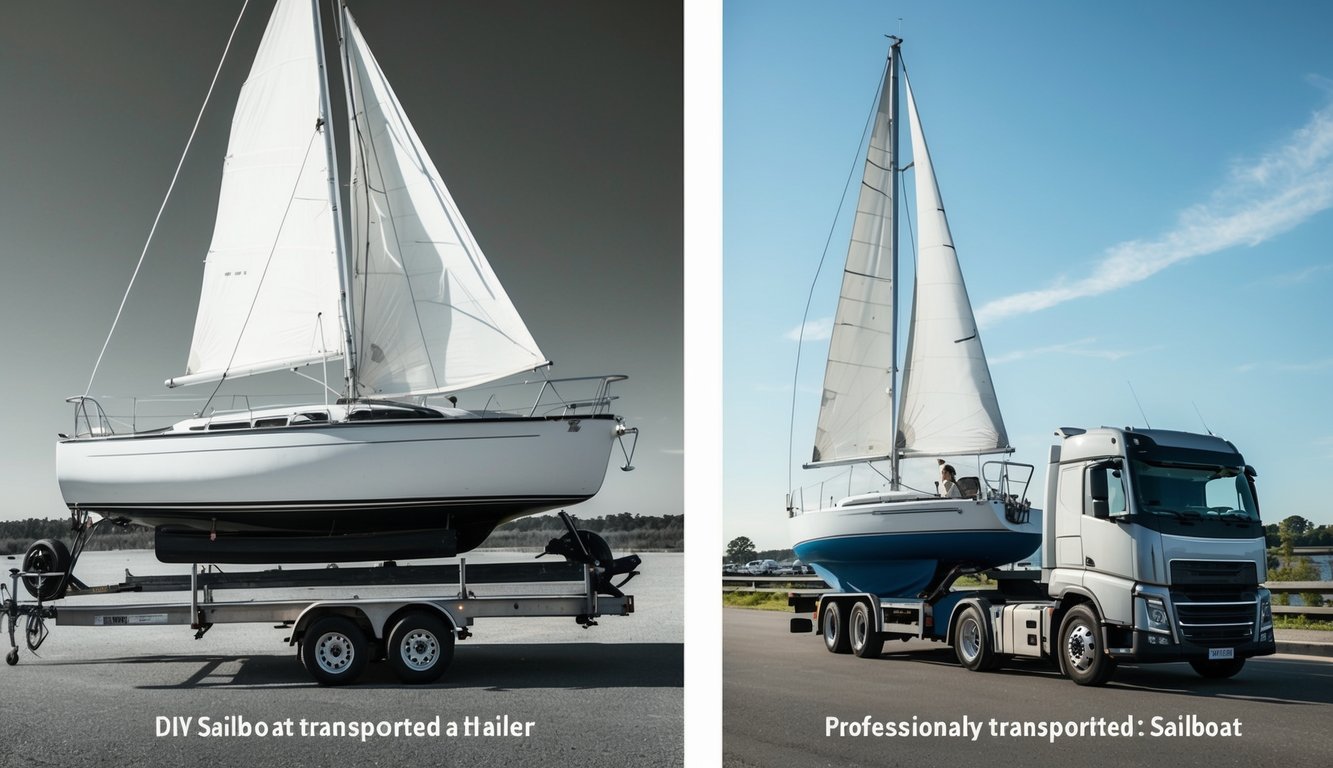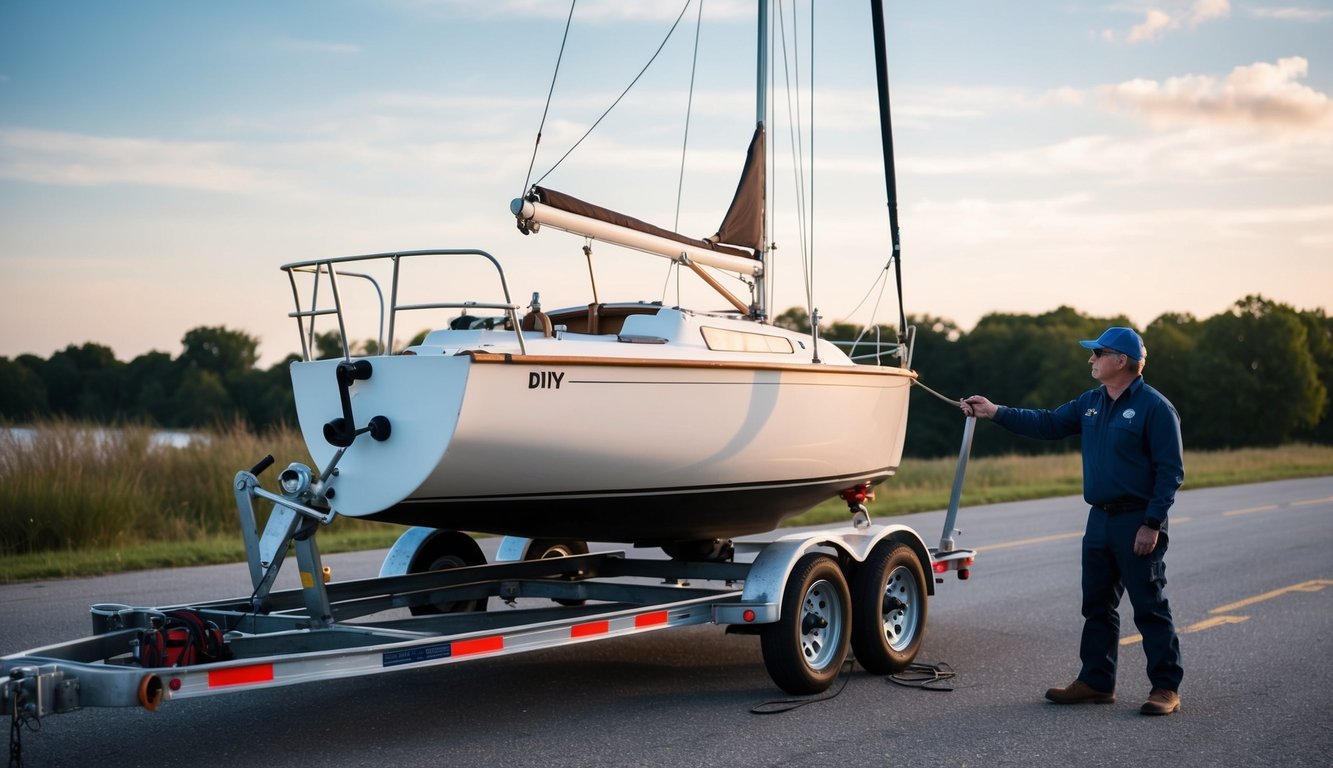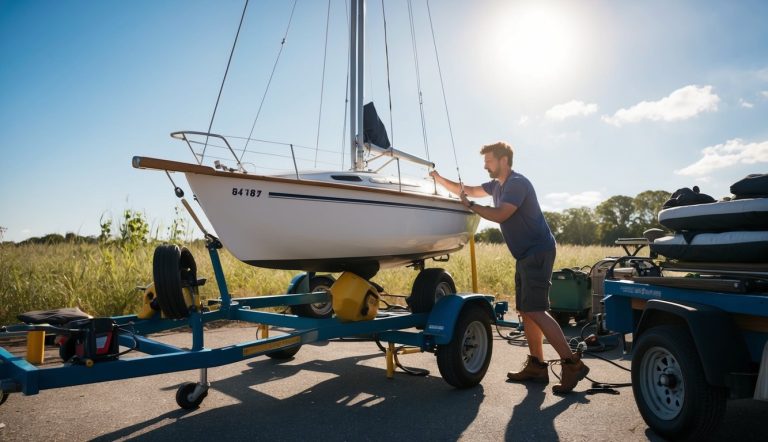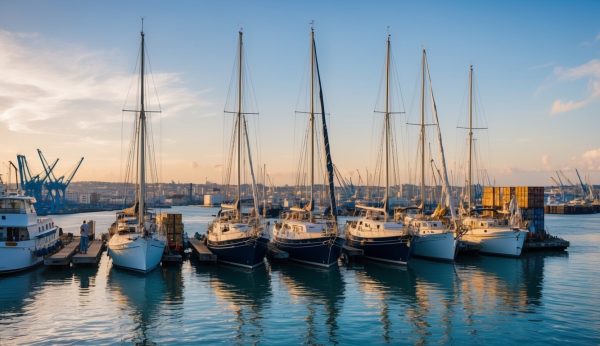Moving a sailboat from one location to another is a significant decision that requires careful planning. You have two main options: doing it yourself or hiring professionals. Each approach has its advantages and challenges that impact your time, budget, and peace of mind.
Understanding the key differences between DIY sailboat transport and professional services will help you make the best choice for your specific situation. DIY transport gives you control over the process and can save money, while professional services offer expertise and convenience. Your decision will depend on factors like your experience level, the size of your vessel, and how far it needs to travel.
Understanding DIY Sailboat Transport

DIY sailboat transport involves moving your vessel yourself rather than hiring professionals. This option requires careful planning, understanding legal requirements, and assessing your capabilities to safely transport a large watercraft.
Defining DIY Sailboat Transport
DIY sailboat transport means you handle all aspects of moving your sailboat from one location to another without professional assistance. This typically involves towing your boat with your own vehicle using a trailer. You become responsible for loading, securing, and transporting the vessel.
When choosing DIY transport, you must:
- Disassemble parts like the mast
- Secure all loose items
- Properly distribute weight on the trailer
- Maintain appropriate tie-downs
The DIY approach offers a sense of control and can be cost-effective for shorter distances. However, it requires significant preparation time and physical effort. You need the right equipment, including an appropriate vehicle with sufficient towing capacity and a properly sized trailer designed for sailboats.
Legal Considerations and Permits
Transporting a sailboat yourself requires understanding various legal requirements that vary by location. Many sailboats exceed standard road size and weight limits, necessitating special permits.
You must research and obtain:
- Oversized load permits – Required when your boat exceeds width, height, or length limitations
- Route-specific permits – Some roads have restrictions on large vehicles
- Insurance coverage – Verify your policy covers transit damages
Before departure, check if you need warning flags, escort vehicles, or can only travel during specific hours. Some jurisdictions restrict oversized transports to daylight hours or non-peak traffic times. You should also verify your driver’s license class is appropriate for the combined weight of your vehicle, trailer, and boat. Commercial driver’s licenses might be required for especially large sailboats.
Comparative Analysis: DIY vs Professional Transport

When deciding between transporting your sailboat yourself or hiring professionals, several key factors will impact your experience and budget. Each approach offers distinct advantages and challenges in terms of both finances and personal investment.
Cost Implications
- DIY boat transport typically costs less upfront than hiring professionals. You’ll primarily pay for fuel, equipment rental (if needed), and any permits required for oversized loads. The average DIY transport runs between $1-3 per mile depending on your boat size.
- Professional transport services generally charge $2-5 per mile for standard sailboats. While more expensive initially, these services include insurance coverage that protects against damage during transit. This can save you thousands if accidents occur.
- Hidden costs exist with DIY approaches. You’ll need proper towing equipment if you don’t already own it. Overnight accommodations may be necessary for long distances. Emergency repairs could also add unexpected expenses.
Time and Effort Evaluation
DIY transport demands significant time commitment and physical effort. You’ll need to:
- Research proper securing techniques
- Obtain necessary permits and plan routes
- Learn proper loading/unloading procedures
- Drive carefully with an oversized load
The process typically takes days of preparation plus actual transit time. Self-transport offers control over your schedule and handling methods, which appeals to hands-on owners. Professional transporters bring efficiency and expertise. They handle all logistics, paperwork, and physical labor. Your involvement is minimal—essentially arranging pickup and delivery times. Their experience also means faster completion, often with specialized equipment to streamline the process.
The learning curve for DIY transport can be steep if you lack experience with oversized loads. Professionals already know how to handle various boat types and challenging transport situations.
Safety Concerns and Risk Management

Transporting a sailboat yourself comes with substantial risks that require careful planning and preparation. Proper risk management can make the difference between a smooth journey and a costly disaster.
Common Mistakes to Avoid
- Failing to properly secure the mast is one of the biggest DIY transport errors. Standing rigging must be properly secured to prevent damage to both your boat and other vehicles on the road.
- Underestimating height clearance causes many accidents. Always measure your boat’s total height on the trailer and plan a route that avoids low bridges and power lines.
- Overlooking weight distribution can lead to trailer sway or even rollover. Position your boat correctly on the trailer with 60% of the weight forward of the axle.
- Using inadequate tie-downs is dangerous. Use marine-grade straps rated for at least 1.5 times your boat’s weight, and check them frequently during transport.
- Many DIYers skip proper emergency procedures. Always carry safety equipment and have a clear plan for breakdowns or accidents.
Insurance and Liability Issues
- Standard boat insurance often doesn’t cover transport damage. Contact your provider to verify coverage or purchase additional transit insurance before moving your vessel.
- Towing a sailboat may exceed your auto policy’s liability limits. If your boat causes an accident, you could face significant out-of-pocket expenses without proper coverage.
- Legal requirements for boat transport vary by state. Research permits, escort requirements, and time restrictions for oversized loads in each jurisdiction you’ll travel through.
- Many DIYers don’t consider potential environmental liability. If your boat leaks fluids during transport, you may face hefty fines.
- Fire hazards and water damage are often overlooked risks. Remove all fuel, disconnect batteries, and ensure your boat is properly winterized if applicable.




